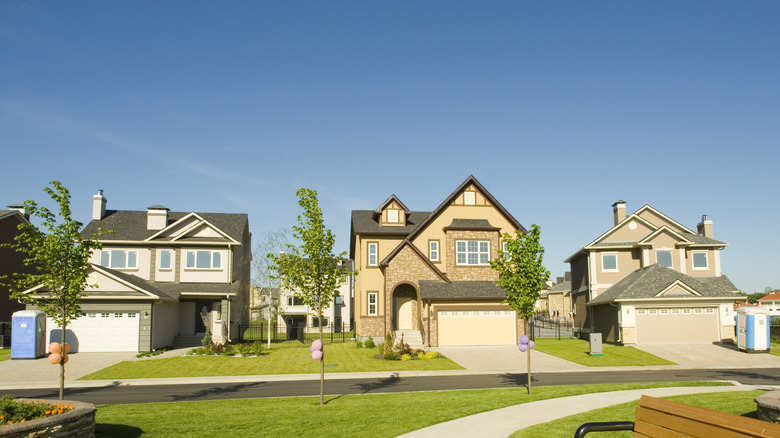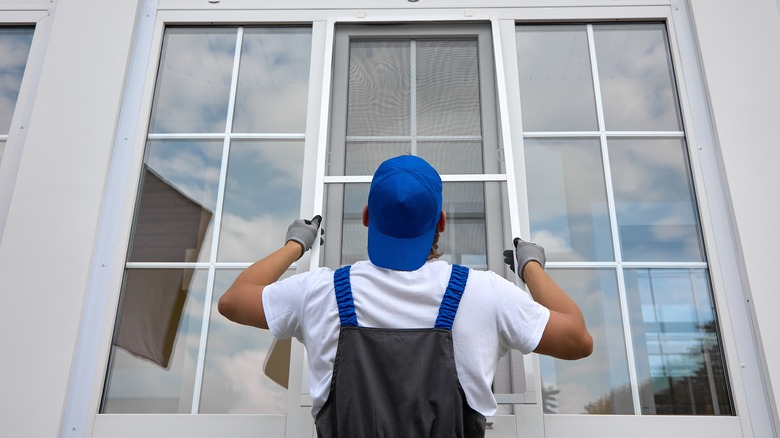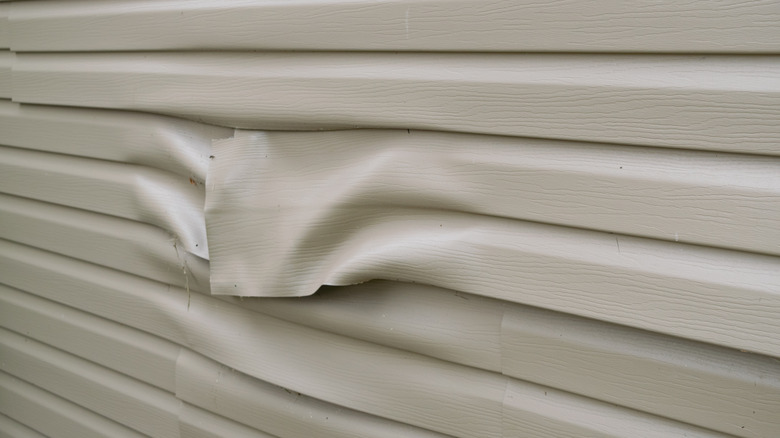The Eco-Friendly Feature That Can Cause Serious Damage To Neighboring Homes
Taking steps to make your home more efficient is a great way to reduce your energy costs, take care of the environment, and even secure a few tax breaks, but occasionally, the more environmentally conscious option has a hidden downside. For the most part, there's very little to worry about when it comes to making higher-efficiency swaps — water-reserving toilets have just as much flushing power, proper insulation has practically no downsides, and solar energy has plenty of ways to ensure things stay functional even on a rainy day. Low-E windows, however, could cause an unexpected issue for your neighbors: melted siding.
According to the United States Department of Energy, windows are the cause of 30% of the average home's lost heating energy, and 76% of sunlight that enters through windows in the warmer seasons turns into heat that your air conditioner then has to work to combat. Curtains and blinds can help to create another layer of insulation, but for those that want a more low-profile energy-efficient solution, low-E or low emittance windows can help to reduce these numbers.
What are low-E windows?
Low-E windows, put simply, are a kind of window made out of energy-efficient glass. Their specific design and material make them better at insulating your home from the elements, whether that means keeping cold air out during the winter or preventing sunlight from heating the cool indoor air during the summer. Unlike traditional glass windows, low-E windows have a coating that allows visible light to pass through while reflecting away infrared and ultraviolet rays, meaning you'll be able to enjoy all of the benefits of refreshing natural light without exhausting your heating and cooling system.
These kinds of windows are especially beneficial in areas that experience extreme temperatures, both heat and cold, and likely won't cause any serious issues for you or your neighbors. In certain specific situations, however, this reflective coating can cause rays of light to bounce off of your windows and redirect into your neighbor's siding, creating a concentrated spot of heat that can cause damage over time.
How to prevent this issue
In most scenarios, low-E windows shouldn't create problems, but in a situation where a window gets plenty of sunlight throughout the day and is close to a neighbor's home, melted siding isn't impossible. Because of this, it's best to analyze your home's layout before committing to a plan and renovating your windows. If you think one part of your home could cause issues, try installing low-E windows in non-problematic areas while sticking with regular glass in that specific spot to ensure you get the best of both worlds.
If you or a neighbor already have low-E windows and are dealing with issues, however, there are a few solutions. Number one, of course, is swapping out the windows for normal glass, but this can get expensive. If you're not willing to undergo a more serious renovation, consider covering the exterior of the window with a non-reflective material, installing an awning to reduce the amount of direct sunshine, or putting up a fence or greenery between homes to help block or disperse the reflected light and heat.


